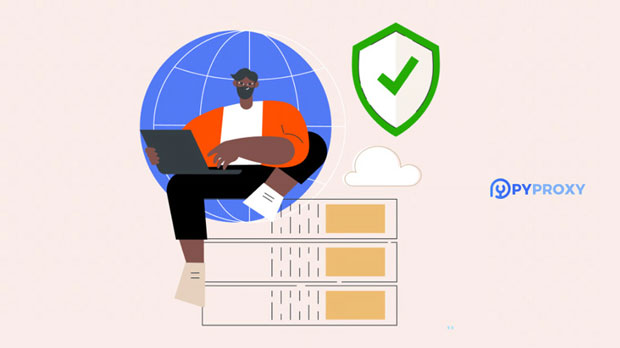When purchasing mobile proxies, understanding the technical parameters that influence their performance and reliability is crucial for making an informed decision. Mobile proxies are a powerful tool for users seeking anonymity, data scraping, or managing multiple social media accounts. However, different proxies have varying specifications and capabilities, and choosing the right one for your needs requires a deep understanding of the technical aspects. In this article, we will delve into the key factors to consider when purchasing mobile proxies, such as IP pool size, IP rotation methods, speed, reliability, and geographical coverage. By the end of this guide, you will be equipped to choose a mobile proxy solution that aligns with your specific requirements. 1. IP Pool SizeThe IP pool size is one of the most significant factors to consider when purchasing mobile proxies. The larger the pool of available IP addresses, the better the performance and versatility of the proxy service. A vast IP pool ensures that you have access to a wide variety of IPs across different regions, which is essential for various tasks like web scraping, data gathering, and managing multiple accounts.A large IP pool reduces the likelihood of your activities being flagged or blocked by websites, as it allows for seamless rotation of IPs during use. This is especially important when using proxies for tasks that require frequent IP changes, such as running automated scripts or accessing geo-blocked content. Additionally, a larger pool helps in providing better redundancy, ensuring the stability of your connection even if some IPs are temporarily unavailable.2. IP Rotation MethodsIP rotation is another critical factor in determining the effectiveness of a mobile proxy. Proxies that offer dynamic IP rotation are particularly valuable, as they automatically change the IP address after a set period or with each request. This helps prevent websites from detecting and blocking your activity, as it mimics the behavior of a regular user who frequently changes IPs.There are two common methods of IP rotation: sticky IP rotation and rotating IPs at regular intervals. Sticky IP rotation involves using the same IP address for a longer period, typically for several minutes or hours, and then switching to another IP. This is beneficial when you need consistent access to a particular service for a specific time, such as logging into an account. On the other hand, rotating IPs at regular intervals provides a more frequent change, offering higher anonymity but possibly reducing session stability.Understanding the IP rotation method offered by the provider can help you select the right option based on your usage requirements.3. Speed and LatencySpeed and latency are fundamental aspects of any proxy service. When using mobile proxies, the speed of the proxy connection directly impacts your tasks, such as browsing, data scraping, or managing multiple accounts. Low latency and high-speed proxies ensure a smoother experience and reduce delays in your operations. For example, scraping large amounts of data from websites requires proxies that can handle high traffic loads and provide fast response times.When considering the speed of mobile proxies, it is essential to check for any restrictions or throttling that may apply. Some providers impose bandwidth limits or restrict certain types of traffic, which can severely impact performance. Look for services that offer unlimited bandwidth or high data transfer rates, especially if your operations demand consistent performance over long periods.4. Reliability and UptimeReliability and uptime are critical factors to ensure that your proxy service is consistent and available when you need it most. A reliable proxy provider should offer a high uptime guarantee, typically 99% or higher. Any service that promises lower than 99% uptime is likely to cause disruptions in your activities, leading to frustration and loss of valuable time.To assess the reliability of a provider, consider checking their service level agreement (SLA) and customer reviews. Many providers also offer monitoring tools that allow you to track the uptime of their proxies in real-time. By choosing a provider with a proven track record of reliability, you can ensure that your mobile proxy service remains operational when you need it the most.5. Geographical CoverageGeographical coverage refers to the range of locations from which the proxy service offers IP addresses. When purchasing mobile proxies, it is essential to consider the geographic distribution of the IPs within the pool. A proxy service that offers a broad selection of locations gives you greater flexibility, as you can choose IPs from specific countries or regions for your activities.For example, if your task involves accessing region-specific content or targeting users from particular countries, having access to a wide range of locations is crucial. Additionally, geographical coverage also plays a role in avoiding geo-blocking and accessing region-restricted content. Proxies with global coverage are valuable for businesses and individuals that require international operations and need to simulate traffic from various locations.6. Bandwidth and Data LimitsBandwidth and data limits are essential parameters to evaluate when purchasing mobile proxies. Many proxy services impose data caps, either daily or monthly, which can limit the amount of data you can transfer through the proxy. For users who require high-volume data scraping, social media management, or other bandwidth-intensive tasks, proxies with generous or unlimited bandwidth are essential.Before purchasing mobile proxies, ensure that the service offers enough bandwidth to accommodate your needs. It's important to look for providers that do not impose unnecessary restrictions on the amount of data you can use or throttle the speed after a certain threshold is reached. Unlimited data plans are ideal for those with intensive, ongoing tasks that require consistent proxy use.7. Security and AnonymitySecurity and anonymity are perhaps the most important considerations when purchasing any proxy service. Mobile proxies offer a higher level of anonymity compared to other types, as they typically use residential IP addresses, which are harder to detect and block. However, not all mobile proxies provide the same level of security.Look for providers that offer features like encryption, secure connection protocols (such as HTTPS), and authentication mechanisms to protect your data and ensure your privacy. Additionally, it is essential to verify that the provider does not log your activity, as this could compromise your anonymity and security. Choose a provider that prioritizes user privacy and adheres to industry best practices for securing data.8. Customer Support and ServiceWhile not a technical parameter per se, customer support is a critical aspect when selecting a mobile proxy provider. A provider with responsive and helpful customer support can assist you in troubleshooting issues, configuring your proxy settings, or resolving any technical difficulties that arise during usage.Ensure that the provider offers multiple channels of support, such as live chat, email, and phone support. Check for response times and the quality of assistance provided. A strong support system can make a significant difference, especially if you encounter issues during critical operations.In conclusion, when purchasing mobile proxies, there are several key technical parameters to consider, including IP pool size, IP rotation methods, speed, reliability, geographical coverage, bandwidth, security, and customer support. By understanding these parameters and how they impact your operations, you can choose a mobile proxy service that best suits your specific needs. Whether you are looking to scrape data, manage social media accounts, or access restricted content, selecting the right mobile proxy service can enhance your online experience, providing anonymity, security, and performance.
Apr 18, 2025
![arrow]()




























































